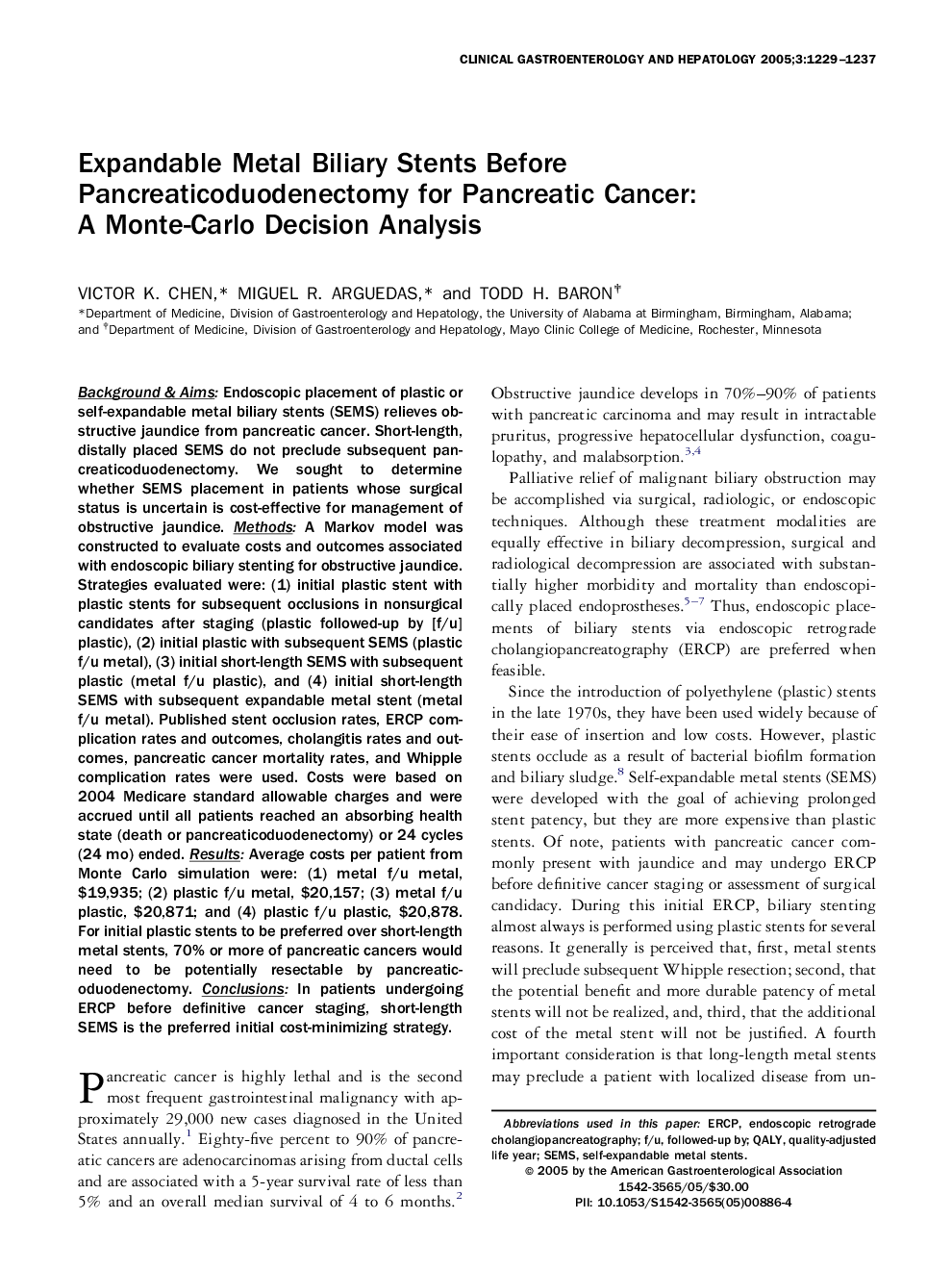| Article ID | Journal | Published Year | Pages | File Type |
|---|---|---|---|---|
| 9241905 | Clinical Gastroenterology and Hepatology | 2005 | 9 Pages |
Abstract
Background & Aims: Endoscopic placement of plastic or self-expandable metal biliary stents (SEMS) relieves obstructive jaundice from pancreatic cancer. Short-length, distally placed SEMS do not preclude subsequent pancreaticoduodenectomy. We sought to determine whether SEMS placement in patients whose surgical status is uncertain is cost-effective for management of obstructive jaundice. Methods: A Markov model was constructed to evaluate costs and outcomes associated with endoscopic biliary stenting for obstructive jaundice. Strategies evaluated were: (1) initial plastic stent with plastic stents for subsequent occlusions in nonsurgical candidates after staging (plastic followed-up by [f/u] plastic), (2) initial plastic with subsequent SEMS (plastic f/u metal), (3) initial short-length SEMS with subsequent plastic (metal f/u plastic), and (4) initial short-length SEMS with subsequent expandable metal stent (metal f/u metal). Published stent occlusion rates, ERCP complication rates and outcomes, cholangitis rates and outcomes, pancreatic cancer mortality rates, and Whipple complication rates were used. Costs were based on 2004 Medicare standard allowable charges and were accrued until all patients reached an absorbing health state (death or pancreaticoduodenectomy) or 24 cycles (24 mo) ended. Results: Average costs per patient from Monte Carlo simulation were: (1) metal f/u metal, $19,935; (2) plastic f/u metal, $20,157; (3) metal f/u plastic, $20,871; and (4) plastic f/u plastic, $20,878. For initial plastic stents to be preferred over short-length metal stents, 70% or more of pancreatic cancers would need to be potentially resectable by pancreaticoduodenectomy. Conclusions: In patients undergoing ERCP before definitive cancer staging, short-length SEMS is the preferred initial cost-minimizing strategy.
Keywords
Related Topics
Health Sciences
Medicine and Dentistry
Gastroenterology
Authors
Victor K. Chen, Miguel R. Arguedas, Todd H. Baron,
